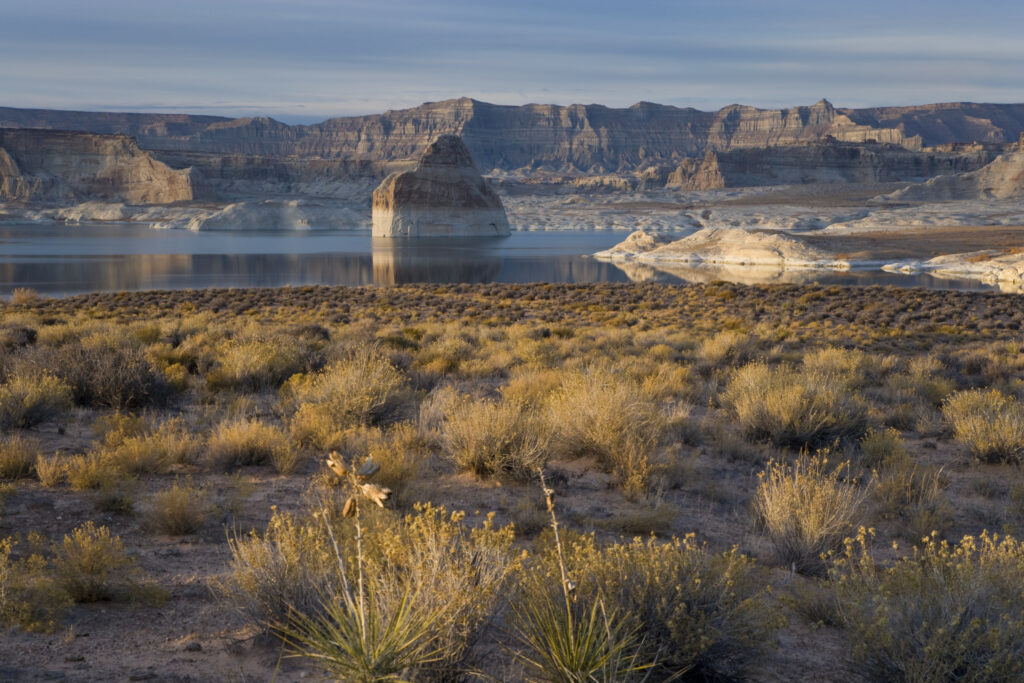Restoration of Native Ecosystems Amid Lake Powell’s Drought
The ongoing drought affecting the Colorado River has significantly impacted Lake Powell, resulting in unprecedented low water levels over the recent years. Yet, this ecological predicament is inadvertently fostering a positive change: the resurgence of native plant communities in regions previously submerged by the reservoir.
“Nature has an incredible ability to recover and rebuild thriving ecosystems on its own,” remarked Seth Arens, an ecologist engaged in research at Utah’s Glen Canyon. His observations underline a hopeful narrative emerging from environmental adversity.
The Emergence of Forgotten Lands
As water levels have drastically declined, extensive areas that were covered for many years are now visible once again. Contrary to expectations of invasive weed domination, these uncovered lands are being re-colonized by indigenous flora that flourished there prior to the creation of Lake Powell during the 1960s and 70s.
Recent data indicates that as of October 28, 2024, Lake Powell’s water level has risen slightly since reaching its historic lows back in 2022—measuring at approximately 3,577 feet above mean sea level (MSL). This figure still reflects a significant deficit; it remains 123 feet below full capacity.
“Thanks to an impressive snowpack two winter seasons ago, we witnessed a rise of approximately 65 feet in Lake Powell’s levels,” shared Gene Shawcroft, Colorado River commissioner for Utah. “Currently we sit just over 37 percent full—a modest increase compared with last year.”
An Ecological Renewal Without Human Interference
While there is cautious optimism about rising levels, doubts linger over whether they will return to mid-20th century heights. This creates ample opportunity for resilient native species to thrive across newly exposed landscapes.
This phenomenon termed as “ecological rebirth,” according to Zak Podmore—a journalist and author who focuses on Lake Powell’s future—is unfolding without direct human involvement; it may serve as a counterbalance against some adverse effects stemming from creating this extensive reservoir system.
A Focus on Biodiversity Documentation
Ecologists like Arens are meticulously studying these emergent ecosystems’ revival process through documenting species such as Baccharis salicifolia—commonly known as mule fat—which represents one facet of this area’s biodiversity restoration effort.
Mule fat is distinguished not only by growing tall—sometimes exceeding twelve feet—but also by having varying conservation statuses; while it’s classified as common it faces imperilment within Utah and critically endangered status in Texas according to U.S. Forest Service evaluations.
The Paradox of Nature Management
“One striking aspect about natural habitats is their remarkable capacity for recovery when given opportunities,” stated Sara Dant—a retired professor specializing in environmental political history—and highlighted meaningful insights into this unfolding dynamic.’
However, uncertainties loom regarding these revitalized plant communities’ sustained existence. As officials contemplate new strategies for governing dwindling Colorado River resources moving forward—they must face critical decisions surrounding potential water level increases at Lake Powell which can jeopardize reborn habitats beneath rising waters.
“A degree or caution regarding our perceived ability ‘to manage nature’ should be exercised because nature adapts irrespective,” emphasized Dant emphasizing collaboration with natural processes rather than asserting control over them.”
A Glimpse into Ecosystem Resilience:
In summary—even amidst challenges presented by declining lake levels—the retreating waters offer invaluable insights into how native ecosystems can flourish when freed from invasive threats overtaking broader regions along Colorado River watershed systems.
If you have suggestions or inquiries related specifically towards scientific narratives surrounding developments at Lake Powell feel free letting us know via science@newsweek.com.
